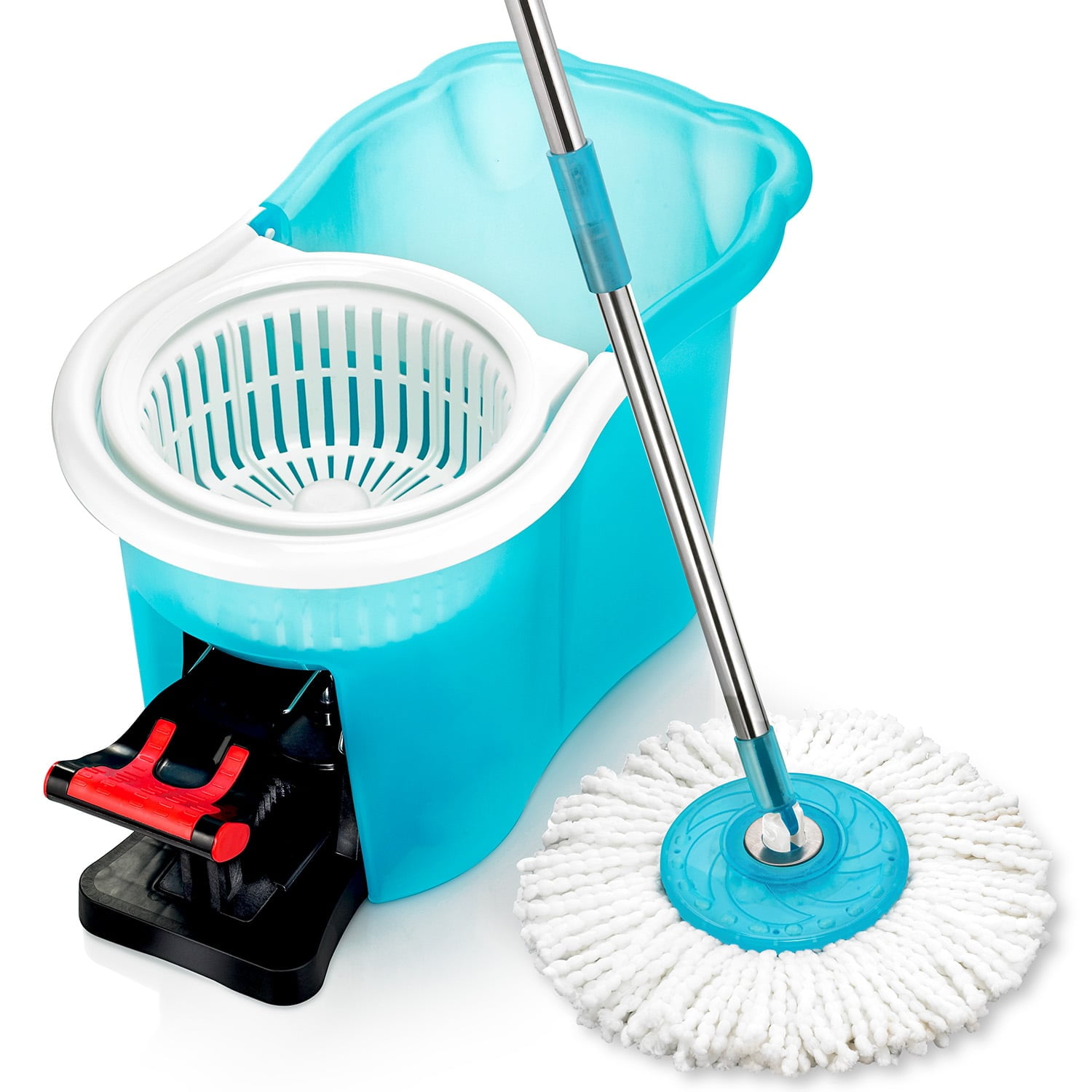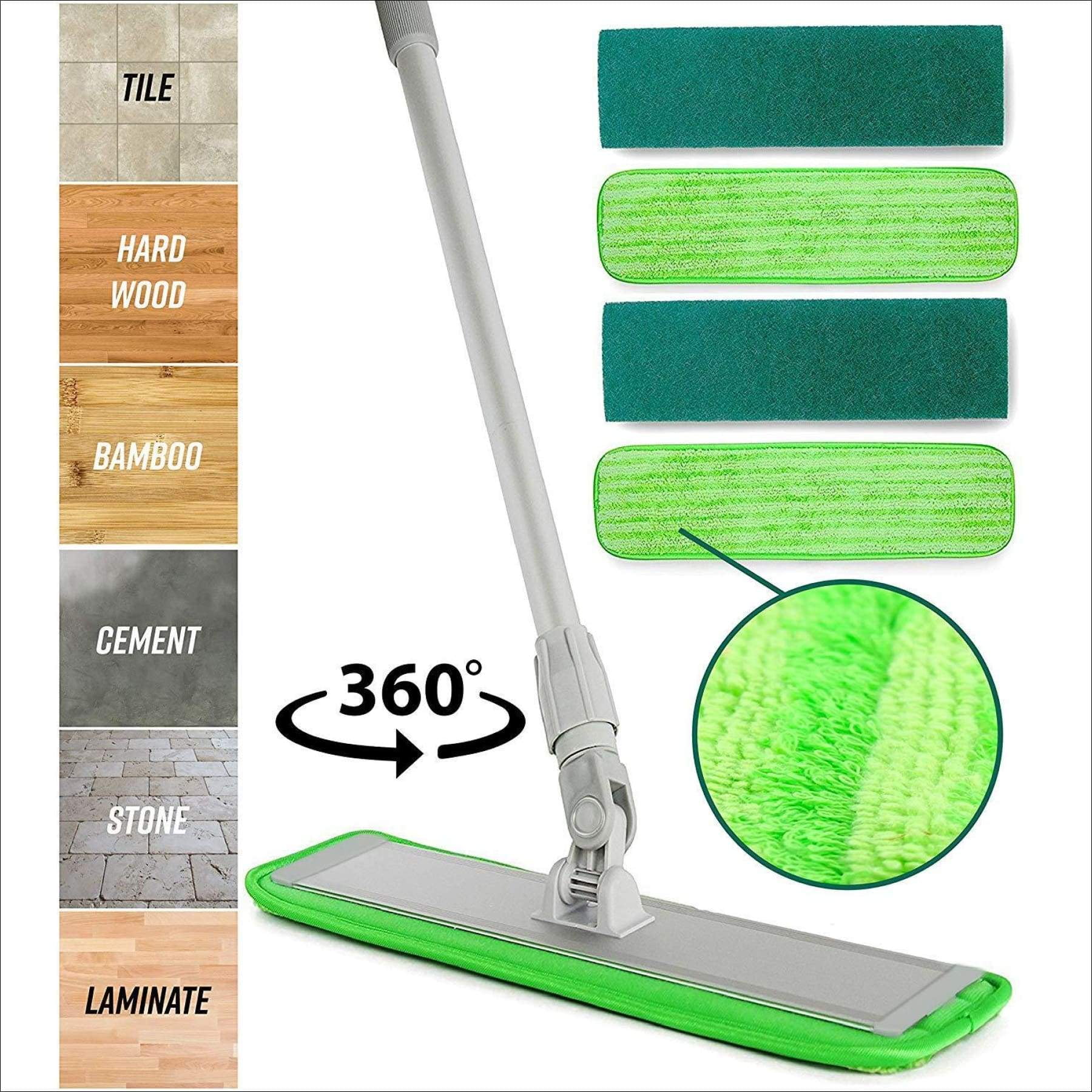Types of Mops for Bathroom Floors

Choosing the right mop for your bathroom can make a world of difference in keeping your floors sparkling clean and germ-free. But with so many options available, it can be overwhelming to know where to start. Fear not, mop-thusiasts! We’re about to dive into the wonderful world of mops, exploring the different types and their unique pros and cons.
Mop Types for Bathroom Floors
Let’s break down the different types of mops and their suitability for various bathroom floor materials.
| Mop Type | Description | Pros | Cons |
|---|---|---|---|
| String Mop | A classic mop with a long handle and a head made of cotton strings. |
|
|
| Sponge Mop | Features a sponge head that absorbs water and cleaning solutions. |
|
|
| Microfiber Mop | A modern mop with a microfiber head that traps dirt and grime. |
|
|
| Spray Mop | Features a built-in spray bottle for applying cleaning solution directly to the floor. |
|
|
| Steam Mop | Uses steam to loosen dirt and grime, killing bacteria and sanitizing floors. |
|
|
Best Mop Types for Specific Bathroom Floor Materials
Let’s get specific about the best mop types for different bathroom floor materials.
“Choosing the right mop for your bathroom floor material can make a big difference in keeping your floors looking their best.”
- Tile: Microfiber mops, spray mops, and steam mops are excellent choices for tile floors. They effectively clean grout lines and leave floors sparkling.
- Vinyl: Microfiber mops and spray mops are great for vinyl floors. They are gentle enough to avoid scratching the surface while still effectively removing dirt and grime.
- Hardwood: Hardwood floors are more delicate, so it’s essential to choose a mop that won’t damage the finish. Microfiber mops and spray mops are ideal for hardwood floors. You can also consider using a specialized wood floor cleaner for best results.
Factors to Consider When Choosing a Mop

Choosing the right mop for your bathroom is crucial for achieving a sparkling clean and hygienic space. With so many different types of mops available, navigating the selection process can be overwhelming. This section will guide you through the key factors to consider, making your mop selection a breeze.
Floor Type
Understanding your bathroom floor type is essential for choosing a mop that effectively cleans and protects your surface. Different floor types have varying sensitivities to cleaning agents and require different cleaning methods. For example, a delicate tile floor might be better suited for a soft microfiber mop, while a durable ceramic floor can withstand the power of a scrub brush mop.
- Tile: Tile floors are a popular choice for bathrooms due to their durability and ease of cleaning. However, some tiles are more delicate than others, and you’ll want to choose a mop that won’t scratch or damage the surface.
- Wood: Wood floors are a beautiful addition to any bathroom, but they require special care. Avoid using harsh chemicals or abrasive mops, as they can damage the finish. Opt for a soft microfiber mop and a mild cleaning solution.
- Vinyl: Vinyl flooring is a durable and water-resistant option for bathrooms. You can use a variety of mops on vinyl, but avoid using abrasive cleaners.
- Laminate: Laminate flooring is a popular choice for its affordability and durability. However, it’s important to choose a mop that won’t damage the surface. Avoid using harsh chemicals or abrasive mops.
Size of the Bathroom
The size of your bathroom plays a significant role in choosing the right mop. A smaller bathroom might be perfectly suited for a compact, lightweight mop, while a larger bathroom might require a mop with a longer handle or a wider cleaning head.
- Small Bathroom: A small bathroom might be best suited for a compact, lightweight mop. These mops are easy to maneuver in tight spaces and can be stored away easily.
- Large Bathroom: For larger bathrooms, consider a mop with a longer handle or a wider cleaning head. This will allow you to cover more ground quickly and efficiently.
Frequency of Cleaning
The frequency of your bathroom cleaning will also influence your mop selection. If you clean your bathroom frequently, a simple and easy-to-use mop might be sufficient. However, if you clean your bathroom less often, you might want to invest in a more powerful mop that can tackle tougher dirt and grime.
- Frequent Cleaning: If you clean your bathroom regularly, a simple microfiber mop might be enough. These mops are lightweight, easy to use, and can be washed and reused multiple times.
- Less Frequent Cleaning: If you clean your bathroom less often, you might want to consider a mop with a built-in cleaning solution or a steam mop. These mops can tackle tougher dirt and grime and help to disinfect your bathroom floor.
Budget
Your budget is another important factor to consider when choosing a mop. Mops range in price from a few dollars to over $100. Consider your budget and the features you need before making a purchase.
- Budget-Friendly: There are many affordable mops on the market, such as microfiber mops and traditional string mops. These mops are a great option for those on a budget.
- Mid-Range: Mid-range mops offer a balance of price and features. These mops often include features such as a built-in cleaning solution or a spray bottle.
- High-End: High-end mops are typically made from premium materials and offer advanced features such as steam cleaning or cordless operation. These mops are a great option for those who want the best possible cleaning results.
Decision-Making Flowchart
[Image of a flowchart illustrating the decision-making process for choosing the right mop. The flowchart should include questions about floor type, bathroom size, cleaning frequency, and budget. Each question should lead to a different type of mop, based on the user’s responses.]
Mop Comparison Table
[Table comparing different mop features, such as material, handle length, and cleaning solution compatibility. The table should include columns for each feature and rows for different types of mops. The table should also include a brief description of each mop type.]
Cleaning Techniques and Tips: Best Mop To Clean Bathroom Floor

Now that you’ve chosen the perfect mop for your bathroom floor, it’s time to tackle the cleaning! Let’s dive into the nitty-gritty of bathroom floor mopping with a step-by-step guide and some tips to make your bathroom sparkle.
Pre-Cleaning Steps, Best mop to clean bathroom floor
Before you even think about mopping, it’s important to prep your bathroom floor for a thorough cleaning. Imagine it as setting the stage for a dazzling performance!
- Clear the Stage: Remove any clutter, rugs, or anything that might be in the way of your mopping masterpiece.
- Dust Bunny Removal: Give your floor a quick sweep or vacuum to remove any loose dirt, hair, or dust bunnies that might be lurking.
- Pre-Treat Stains: If you have stubborn stains like soap scum, mildew, or hard water deposits, pre-treat them with a specialized cleaner or a baking soda paste.
Mopping Procedures
Now it’s time for the grand mopping performance!
- Fill Your Mop Bucket: Mix your cleaning solution according to the manufacturer’s instructions. Remember, a little goes a long way!
- Mop It Up: Dip your mop head into the cleaning solution and wring it out thoroughly. You want it damp, not dripping wet.
- Work Your Magic: Mop the floor in a back-and-forth motion, overlapping each stroke to ensure you’re cleaning every inch.
- Rinse and Repeat: Rinse your mop head in clean water and wring it out again. Repeat steps 3 and 4 until your floor is sparkling clean.
Drying Techniques
After all that mopping, it’s time to give your bathroom floor a chance to dry.
- Air Dry: If you have time, let your bathroom floor air dry completely.
- Squeegee It: For a faster drying option, use a squeegee to remove excess water.
- Towel Dry: If you’re in a hurry, use a clean, dry towel to wipe up any remaining moisture.
Removing Tough Stains
Stubborn stains are like pesky party crashers, but don’t worry, we’ve got you covered!
- Soap Scum: Use a mixture of white vinegar and water to tackle soap scum.
- Mildew: Bleach is a great option for mildew, but make sure to use it in a well-ventilated area and follow the manufacturer’s instructions.
- Hard Water Deposits: Try a commercial hard water remover or a paste made from baking soda and water.
Mop Care and Maintenance
Just like any other cleaning tool, your mop needs some TLC to stay in tip-top shape.
- Wash Regularly: After each use, wash your mop head according to the manufacturer’s instructions.
- Dry Thoroughly: Make sure your mop head is completely dry before storing it to prevent mildew growth.
- Replace When Needed: Over time, your mop head will wear out. Replace it when it starts to fray or lose its effectiveness.
